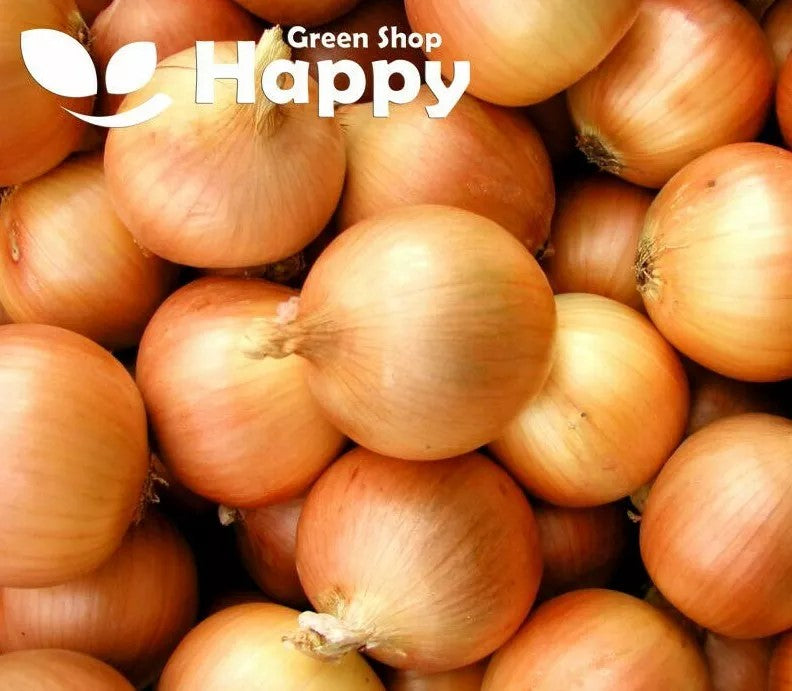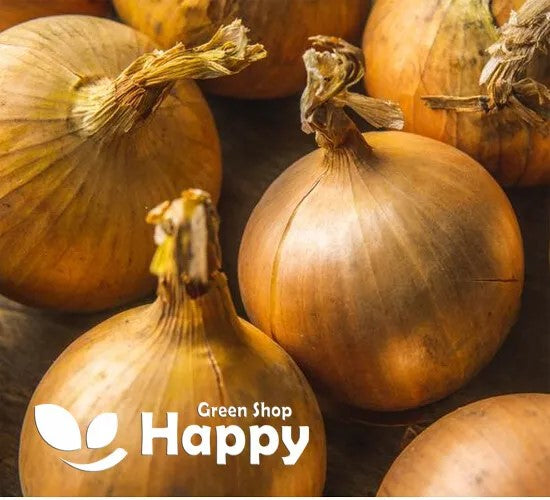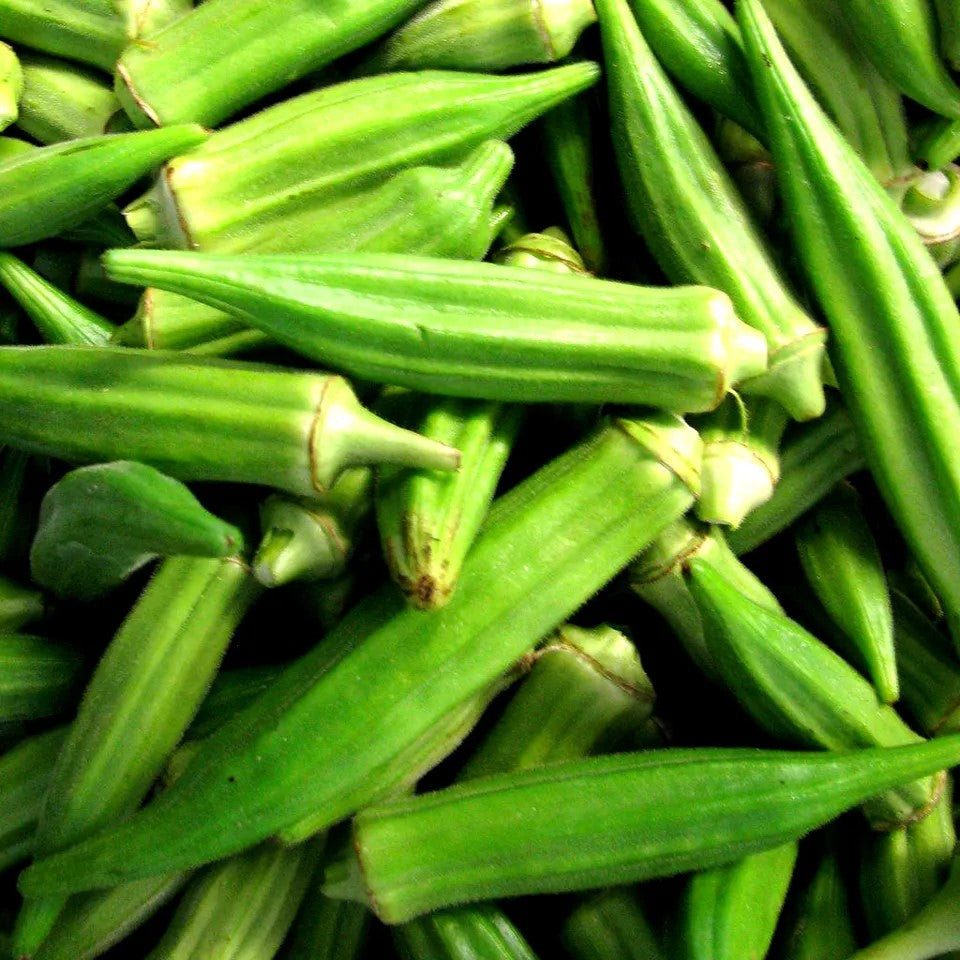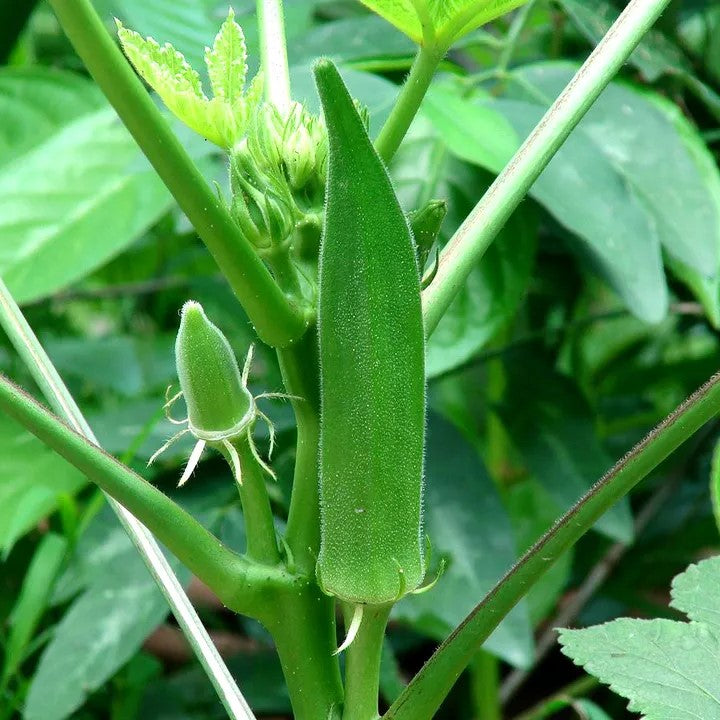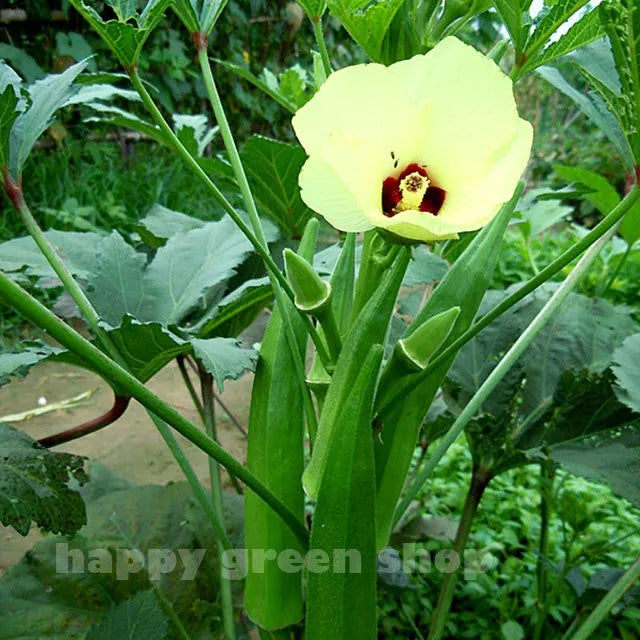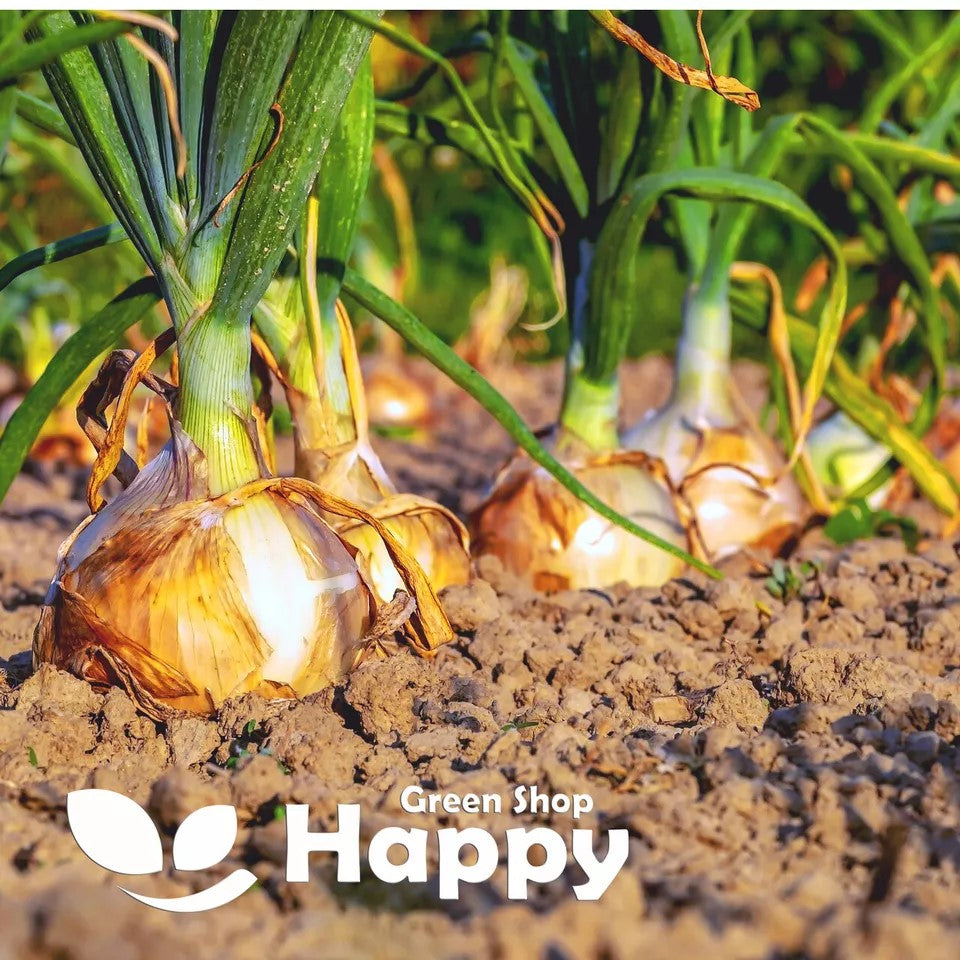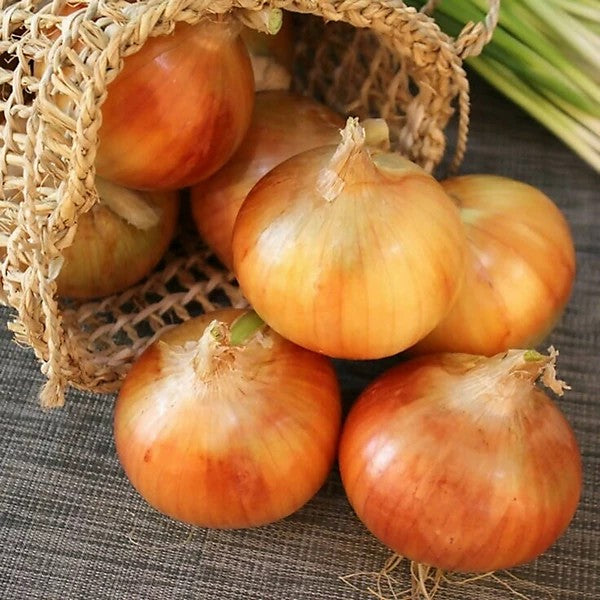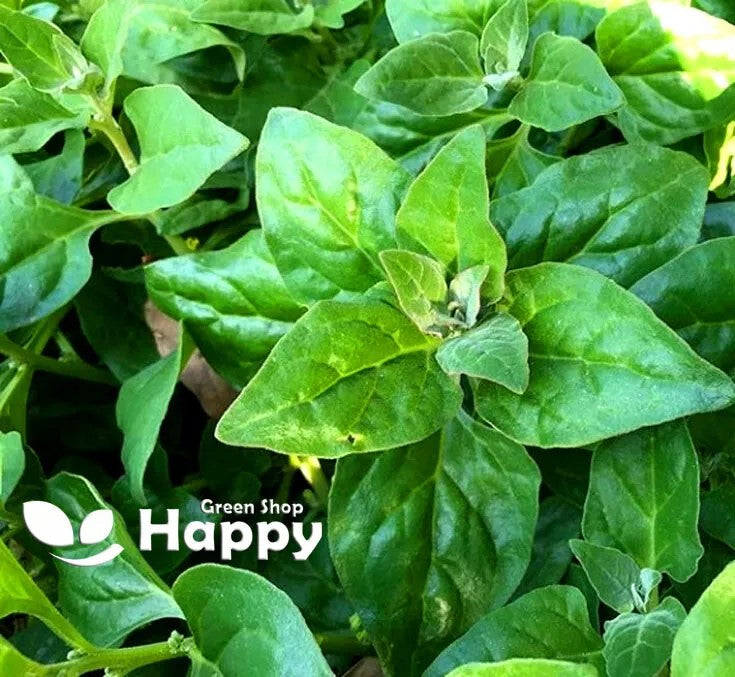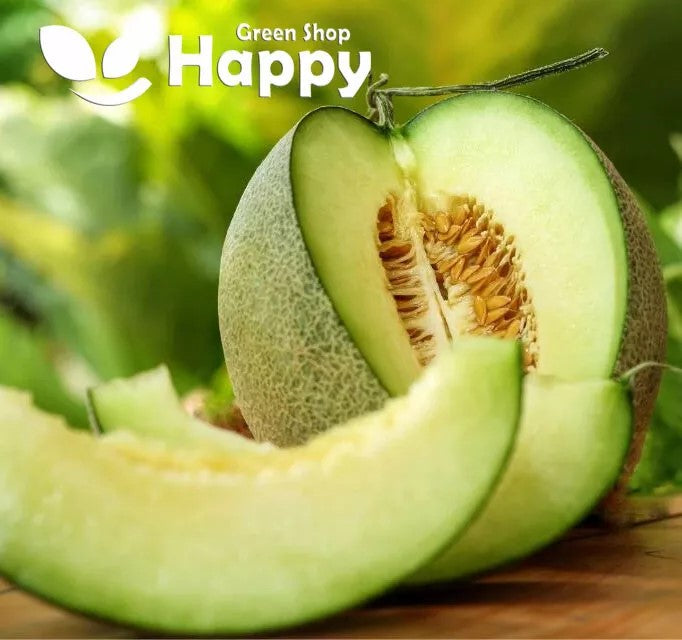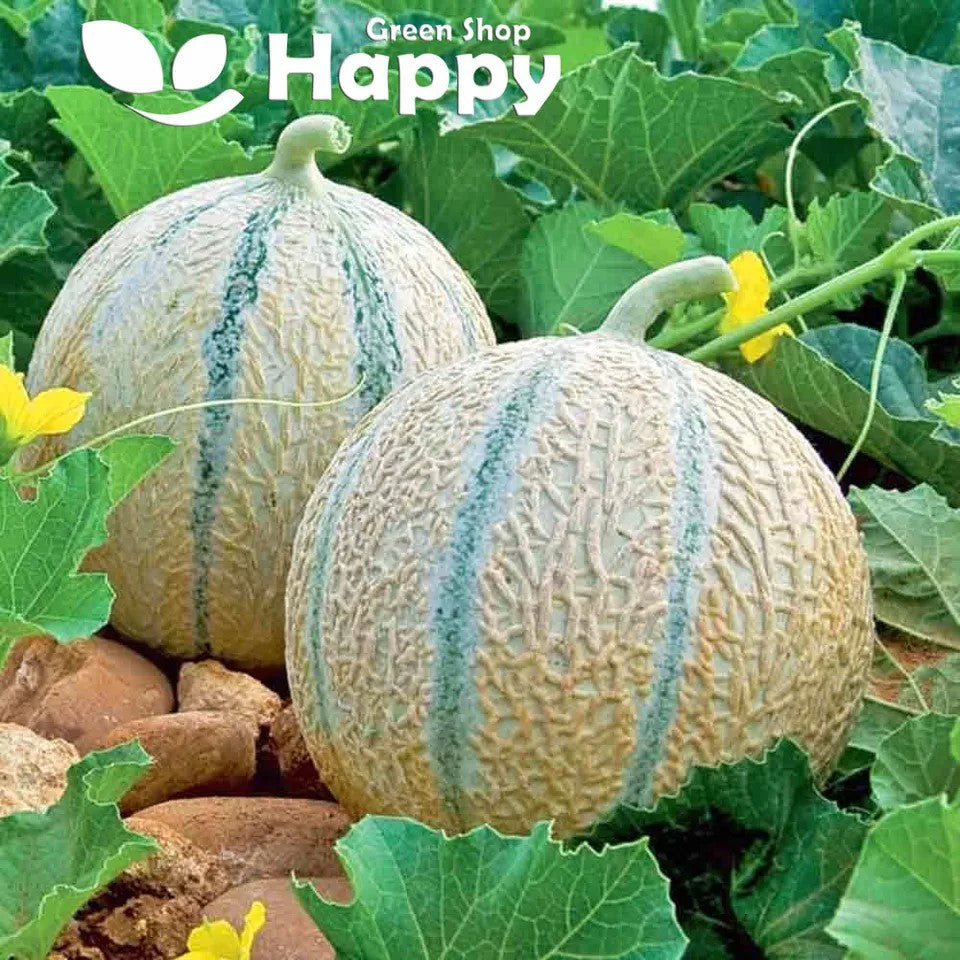Sort by:
190 products
190 products
Onion 'Hiberna' Seeds (Allium cepa)
Grow a reliable and flavorful onion crop with Onion ‘Hiberna’. This hardy winter onion variety is prized for its firm, golden bulbs with a classic, mildly pungent flavor. Known for its excellent storage quality, it ensures you have fresh onions well into the colder months. A dependable choice for kitchen gardens and self-sufficient growers.
How to Grow
-
Sow seeds outdoors in spring or late summer.
-
Use fertile, well-drained soil in a sunny position.
-
Sow thinly 1 cm deep in rows 25–30 cm apart.
-
Thin seedlings to 10–15 cm apart for full-sized bulbs.
-
Harvest once tops begin to yellow and fall over.
Key Features
-
Hardy winter onion variety
-
Firm, golden bulbs with mild pungency
-
Excellent storage potential
-
Reliable yields and consistent growth
-
Perfect for year-round cooking
Ideal For
-
Long-storage onion harvests
-
Everyday culinary use
-
Self-sufficient and winter gardens
-
Growers seeking hardy, dependable onions
Sowing
-
Best time: Spring or late summer
-
Depth: 1 cm
-
Spacing: 25–30 cm between rows, thin to 10–15 cm
-
Prefers full sun and well-drained soil
Quick Tip
-
Cure bulbs in a dry, airy place after harvesting to extend storage life.
Onion 'Spanish Sun' Seeds (Allium cepa)
Bring sunshine to your garden with Onion 'Spanish Sun', a reliable, early-maturing variety that produces large, globe-shaped golden bulbs. Known for its mild, sweet flavor and crisp texture, it’s perfect for fresh salads, cooking, or storing. Easy to grow and versatile in the kitchen, this onion is a must-have for every vegetable garden.
How to Grow
-
Sow indoors from January to March or directly outdoors from March to April.
-
Prefers fertile, well-drained soil in full sun.
-
Sow seeds 1 cm deep in rows 30 cm apart.
-
Thin seedlings to 10 cm spacing for full-sized bulbs.
-
Keep soil moist but not waterlogged.
Key Features
-
Early-maturing, large golden bulbs
-
Mild, sweet flavor with crisp texture
-
Suitable for fresh use, cooking, or storing
-
Reliable variety for consistent yields
-
Easy to grow in most garden soils
Ideal For
-
Home gardeners and allotments
-
Fresh salads, soups, and everyday cooking
-
Long-term storage after harvest
-
Gardeners seeking early, high-quality onions
Sowing
-
Best time: Indoors January–March, outdoors March–April
-
Depth: 1 cm
-
Spacing: 10 cm between plants, 30 cm between rows
-
Position: Full sun, well-drained fertile soil
-
Harvest: August to September
Quick Tip
-
Allow bulbs to fully dry in the sun before storing to extend their shelf life.
Okra 'Clemson Spineless' – Seeds (Abelmoschus esculentus)
Okra 'Clemson Spineless' is the most popular and widely grown okra variety, prized for its tender, spineless green pods and high yields. A warm-season crop, it thrives in sunny conditions and produces long, slim pods that are perfect for frying, grilling, soups, curries, and traditional gumbo dishes. Compact and productive, it’s ideal for home gardens or allotments.
How to Grow
-
Sow indoors: March – May in pots or modules with heat.
-
Transplant outdoors: After last frost when soil has warmed.
-
Soil: Fertile, well-drained soil in full sun.
-
Spacing: 30–45 cm apart.
-
Water regularly during dry spells to encourage pod production.
Key Features
-
Famous spineless okra variety
-
High-yielding and fast-growing
-
Tender, slim pods with rich flavor
-
Heat-loving annual for summer harvests
-
Perfect for gumbo, curries, soups, and frying
Ideal For
-
Kitchen gardens and allotments
-
Sunny, sheltered growing positions
-
Gardeners who enjoy exotic vegetables
Sowing & Harvest
-
Sow: March – May
-
Harvest: July – October
Quick Tip
Harvest pods when young (7–10 cm long) for the best flavor and tenderness. Picking regularly encourages further production.
Onion 'Signum' Seeds (Allium cepa)
Grow strong, reliable crops with Onion 'Signum', a versatile variety producing uniform, medium-sized bulbs with excellent storage qualities. Known for its firm texture and balanced flavor, this onion is a staple for every kitchen, perfect for cooking, salads, and long-term use through winter. A resilient and productive choice for gardeners.
How to Grow
-
Sow indoors in early spring or directly outdoors when soil is workable.
-
Prefers fertile, well-drained soil in full sun.
-
Sow seeds thinly 1 cm deep in rows 25–30 cm apart.
-
Thin seedlings to 10 cm spacing.
-
Keep soil moist but not waterlogged.
Key Features
-
Produces medium, round, uniform bulbs
-
Firm texture with mild, balanced flavor
-
Excellent for storage after harvest
-
High yields with reliable performance
-
Suitable for fresh use or winter storage
Ideal For
-
Everyday kitchen use
-
Long-term storage and winter supplies
-
Fresh cooking, salads, soups, and stews
-
Gardeners seeking a reliable, classic onion
Sowing
-
Best time: Early spring to early summer
-
Depth: 1 cm
-
Row spacing: 25–30 cm
-
Plant spacing: 10 cm after thinning
-
Harvest: Mid to late summer
Quick Tip
-
For the longest storage life, allow bulbs to dry thoroughly before storing in a cool, dark place.
Onion "Augusta" – Seeds (Allium cepa)
The Onion "Augusta" is a reliable, high-quality variety producing uniform, golden-yellow bulbs with firm flesh and excellent storage ability. Known for its good resistance to bolting and disease, Augusta is ideal for both kitchen gardeners and allotment growers seeking dependable harvests. Its mild, well-balanced flavor makes it versatile for everyday cooking.
How to Grow
-
Sow indoors from January to March for transplanting, or direct outdoors from March to April.
-
Sow thinly, 1 cm deep, in rows 25–30 cm apart.
-
Prefers fertile, well-drained soil in full sun.
-
Thin seedlings to 10 cm apart to allow bulbs to swell.
-
Water regularly during dry periods.
Key Features
-
Uniform, golden-yellow bulbs
-
Mild, versatile flavor
-
Good resistance to bolting
-
Excellent storage potential
-
Easy to grow, reliable yields
Ideal For
-
Everyday cooking – soups, salads, stir-fries, roasting
-
Long-term storage after harvest
-
Kitchen gardens and allotments
Sowing & Harvest
-
Sow: January to April
-
Depth: 1 cm
-
Spacing: 10 cm between plants, 25–30 cm between rows
-
Harvest: August to September
Quick Tip
-
Lift onions when the tops begin to yellow and bend over. Dry thoroughly before storing in a cool, airy place.
Oak Leaf Lettuce 'Green Salad Bowl' – Seeds (Lactuca sativa)
A true kitchen garden favorite, Oak Leaf Lettuce 'Green Salad Bowl' is a fast-growing, cut-and-come-again variety with long, deeply notched green leaves that resemble oak foliage. Its mild, tender flavor and crisp texture make it perfect for everyday salads. Easy to grow and slow to bolt, it provides a generous harvest of fresh greens all season long.
How to Grow
. Sow indoors from February to April or directly outdoors from March to July
. Sow thinly, 0.5 cm deep in rows 25–30 cm apart
. Thin seedlings to 20 cm apart, or grow closer for baby leaves
. Prefers full sun and moist, fertile, well-drained soil
. Harvest leaves regularly to encourage continuous cropping
Key Features
. Classic oak leaf lettuce with tender green leaves
. Mild flavor, perfect for salads and sandwiches
. Cut-and-come-again variety for extended harvests
. Slow to bolt, even in warmer conditions
. Easy to grow in beds, borders, or containers
Ideal For
. Fresh everyday salads
. Cut-and-come-again harvesting
. Home gardens, pots, and allotments
. Gardeners seeking reliable, easy lettuce
Sowing & Harvest
. Sow: February – July
. Harvest: May – September
Quick Tip
For the best flavor and texture, pick leaves early in the morning when they’re freshest and most tender.
New Zealand Spinach Seeds (Tetragonia tetragonioides)
Grow a heat-tolerant alternative to traditional spinach with New Zealand Spinach (Tetragonia tetragonioides). This hardy, fast-growing leafy green produces succulent, nutrient-rich leaves ideal for salads, steaming, or sautéing. Perfect for summer gardens, it thrives in warm weather when regular spinach struggles, providing a continuous harvest of fresh greens.
How to Grow
-
Sow seeds directly outdoors after the last frost when soil has warmed.
-
Use well-drained, fertile soil in full sun to partial shade.
-
Sow seeds 1–2 cm deep and thin seedlings to 25–30 cm apart.
-
Keep soil consistently moist for best growth.
-
Harvest young leaves regularly or cut mature leaves, leaving the plant to regrow.
Key Features
-
Heat-tolerant alternative to traditional spinach
-
Fast-growing, nutrient-rich leaves
-
Hardy and easy to grow
-
Ideal for salads, steaming, or sautéing
-
Provides continuous harvest throughout warm seasons
Ideal For
-
Vegetable gardens and raised beds
-
Summer harvesting when regular spinach struggles
-
Fresh salads, cooking, and sautéed greens
-
Continuous harvest of nutrient-rich leaves
Sowing
-
Best time: After last frost, when soil is warm
-
Depth: 1–2 cm
-
Spacing: Thin to 25–30 cm apart
-
Prefers full sun to partial shade and fertile, well-drained soil
Quick Tip
-
Regularly harvest outer leaves to encourage continuous growth throughout the season.
Melon 'Honeydew' – Seeds (Cucumis melo)
Enjoy the sweet, juicy flavor of Honeydew Melon, a classic variety known for its smooth pale green skin and luscious, pale green flesh. Perfect for fresh summer desserts, smoothies, and fruit salads, Honeydew is a highly rewarding melon for home gardeners. With proper care, it produces medium to large fruits that are sweet, fragrant, and full of summer flavor.
How to Grow
. Sow indoors: March – May, 1–2 cm deep in pots or seed trays
. Transplant outdoors: After last frost, spacing 60–80 cm apart in fertile, well-drained soil
. Sow outdoors: May – June, in warm, sunny locations
. Requires consistent watering and full sun for optimal sweetness
. Harvest: When fruits are heavy, with a waxy bloom on the skin and a sweet aroma
Key Features
. Classic Honeydew melon with smooth pale green skin
. Sweet, juicy, aromatic pale green flesh
. Medium to large fruits for fresh eating and salads
. High-yielding and rewarding summer crop
. Ideal for warm, sunny gardens or greenhouse growing
Ideal For
. Fresh summer desserts, fruit salads, and smoothies
. Home gardens and allotments
. Greenhouse cultivation for earlier harvests
. Gardeners seeking fragrant, sweet melons
Sowing & Harvest
. Sow: March – June
. Harvest: August – September
Quick Tip
For sweeter fruits, provide full sun, warm soil, and consistent watering, and avoid overhead watering to reduce the risk of fungal disease.
Melon 'Charentais' Seeds (Cucumis melo)
Enjoy the taste of France in your garden with Melon 'Charentais' (Cucumis melo). This classic French heirloom variety produces small, round melons with smooth grey-green skin and rich, aromatic orange flesh. Sweet, juicy, and intensely fragrant, it’s the perfect melon for fresh eating, desserts, and gourmet summer salads.
How to Grow
-
Sow seeds indoors 3–4 weeks before the last frost.
-
Use rich, well-drained soil in a warm, sunny spot.
-
Sow seeds 1.5–2 cm deep and keep soil moist until germination (7–10 days).
-
Transplant outdoors after frost, spacing 60–90 cm apart.
-
Harvest when fruits turn fragrant and skin shows slight cracking near the stem.
Key Features
-
Classic French heirloom melon
-
Small, round fruits with smooth grey-green skin
-
Intensely sweet, juicy, and aromatic orange flesh
-
Perfect for fresh eating, desserts, and summer salads
-
Compact vines, ideal for gardens and greenhouses
Ideal For
-
Home gardeners seeking gourmet-quality fruit
-
Fresh summer snacking and desserts
-
Greenhouse, polytunnel, or warm outdoor gardens
-
Lovers of fragrant, sweet melons
Sowing
-
Best time: Indoors 3–4 weeks before last frost
-
Depth: 1.5–2 cm
-
Spacing: 60–90 cm apart
-
Prefers full sun and rich, well-drained soil
Quick Tip
-
For the sweetest flavor, allow melons to ripen fully on the vine before picking.
Showing 108/190


